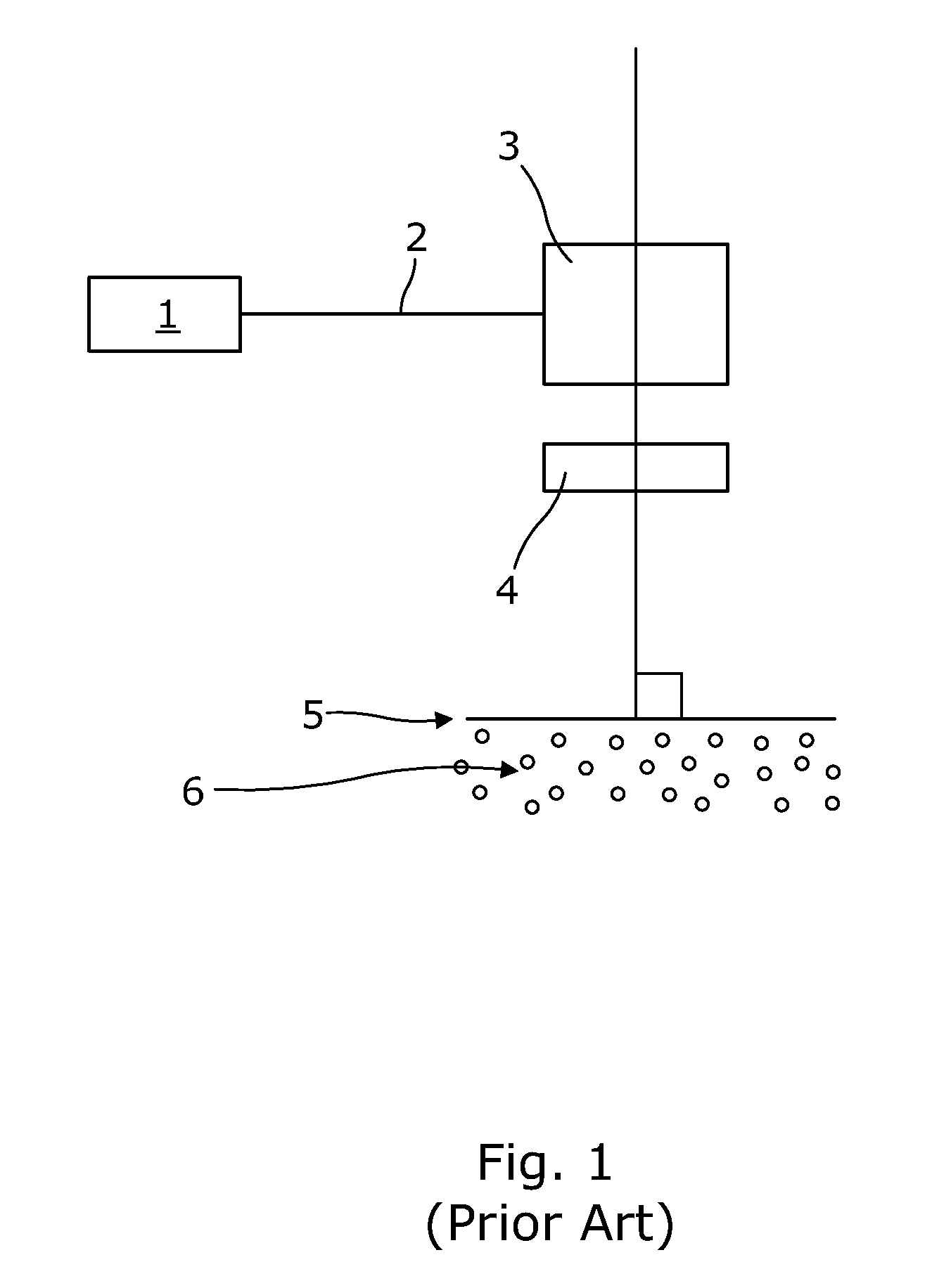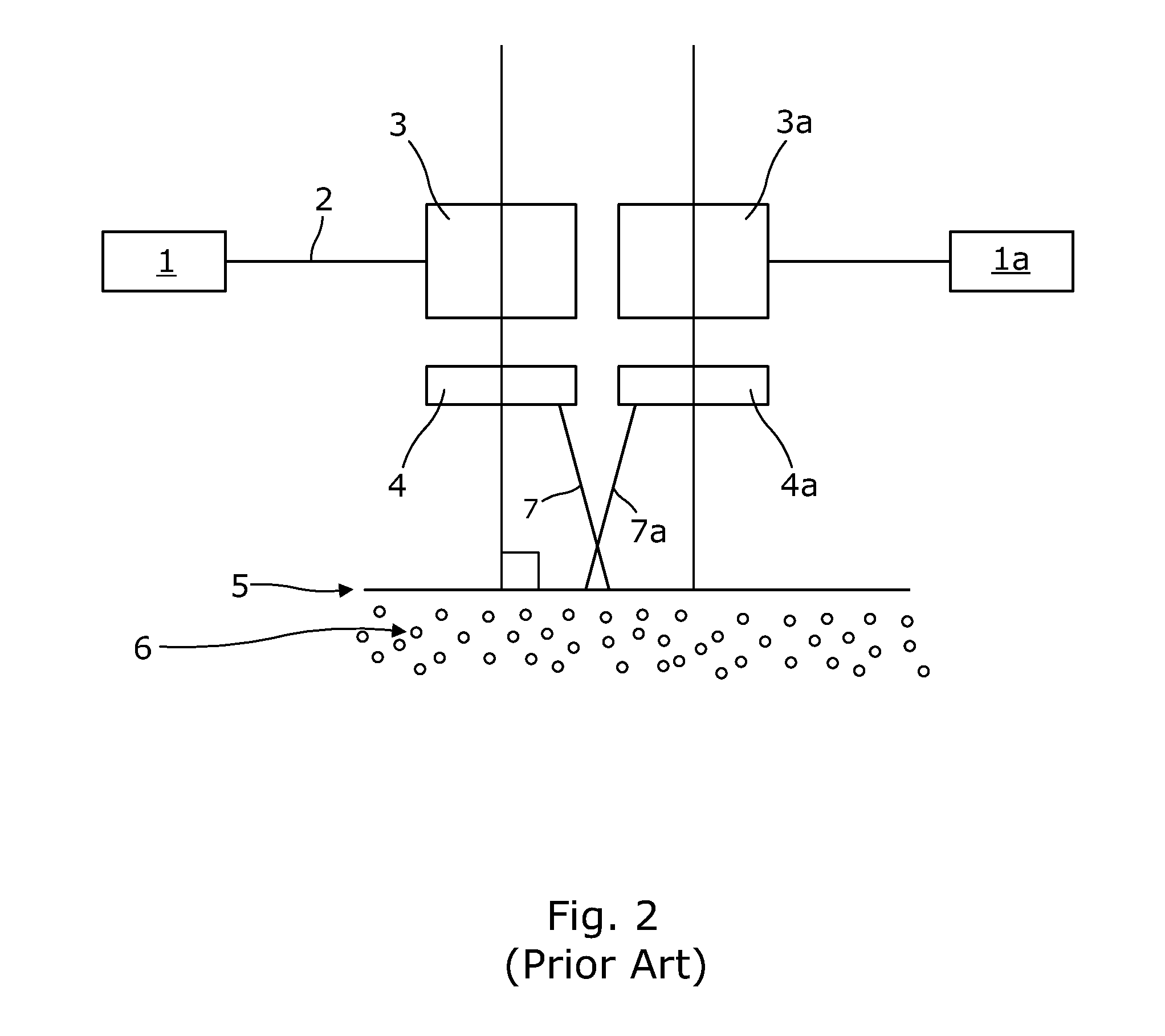Apparatus for additive layer manufacturing of an article
a technology of additive layer and additive layer, applied in the direction of additive manufacturing process, manufacturing tools, electric/magnetic/electromagnetic heating, etc., can solve the problems of spot placement and/or spot size accuracy decline, small and precise spot size, and the effect of reducing the impact of the resultant build quality
- Summary
- Abstract
- Description
- Claims
- Application Information
AI Technical Summary
Benefits of technology
Problems solved by technology
Method used
Image
Examples
Embodiment Construction
[0039]Turning to FIG. 1, (prior art) the standard known system has a laser 1 that transmits light via a conductor (e.g. optical fibre 2) to a scanner 3, which scans a beam through an F-theta lens 4, which is mounted perpendicular to a focal plane 5 at or near the surface of a powder or fluid bed 6. A typical useful depth of focus of a fixed focus laser with a Gaussian beam profile is approximately + / −2 mm. Typically the useful focal plane is 250×250 mm square and a scanner 3 is located approximately 500 mm from the local plane. The laser spot shape and size is substantially but not exactly constant across the focal plane. As the laser beam moves away from the centre point its shape and size changes becoming oval and expanding in size, thereby reducing power density. This variation determines the size of the useful focal plane—it's an area of process acceptable variation.
[0040]A development of this is show in FIG. 2 (prior art), where two such arrangements are mounted side by side, w...
PUM
| Property | Measurement | Unit |
|---|---|---|
| size | aaaaa | aaaaa |
| speeds | aaaaa | aaaaa |
| particle size | aaaaa | aaaaa |
Abstract
Description
Claims
Application Information
 Login to View More
Login to View More - R&D
- Intellectual Property
- Life Sciences
- Materials
- Tech Scout
- Unparalleled Data Quality
- Higher Quality Content
- 60% Fewer Hallucinations
Browse by: Latest US Patents, China's latest patents, Technical Efficacy Thesaurus, Application Domain, Technology Topic, Popular Technical Reports.
© 2025 PatSnap. All rights reserved.Legal|Privacy policy|Modern Slavery Act Transparency Statement|Sitemap|About US| Contact US: help@patsnap.com



